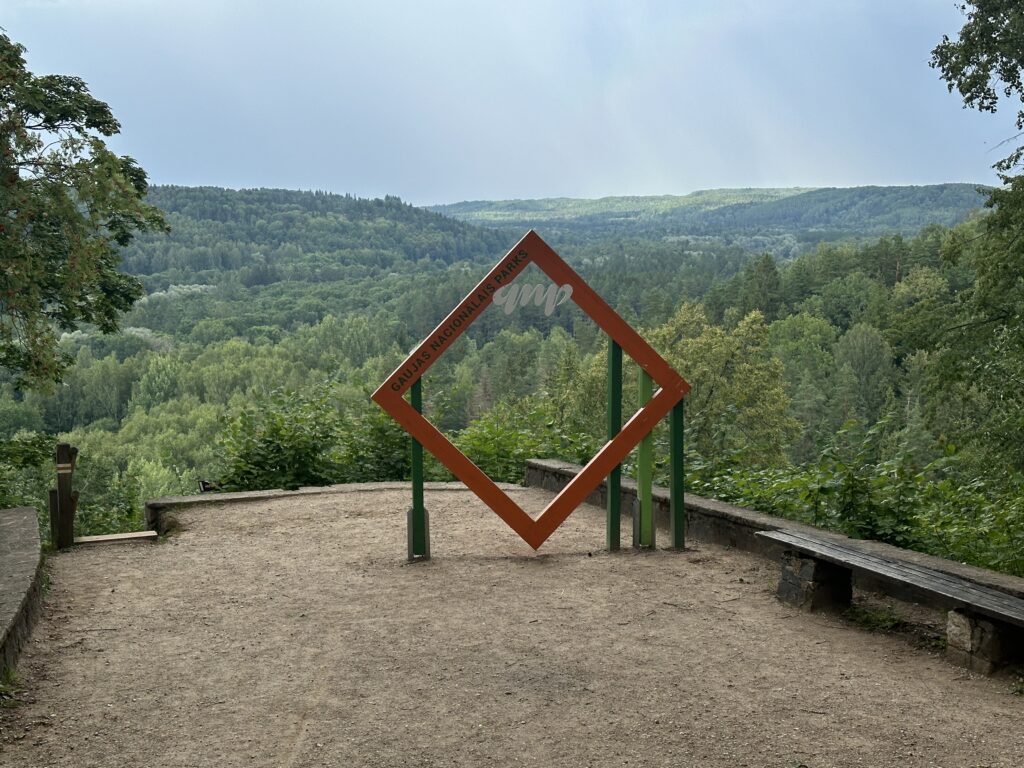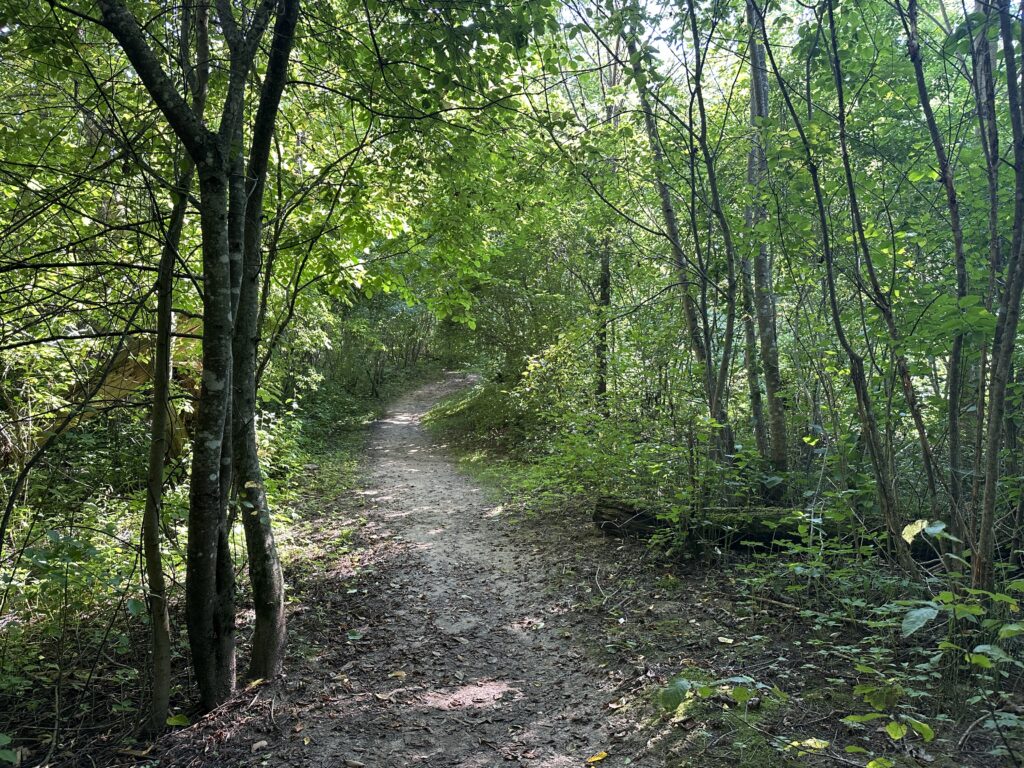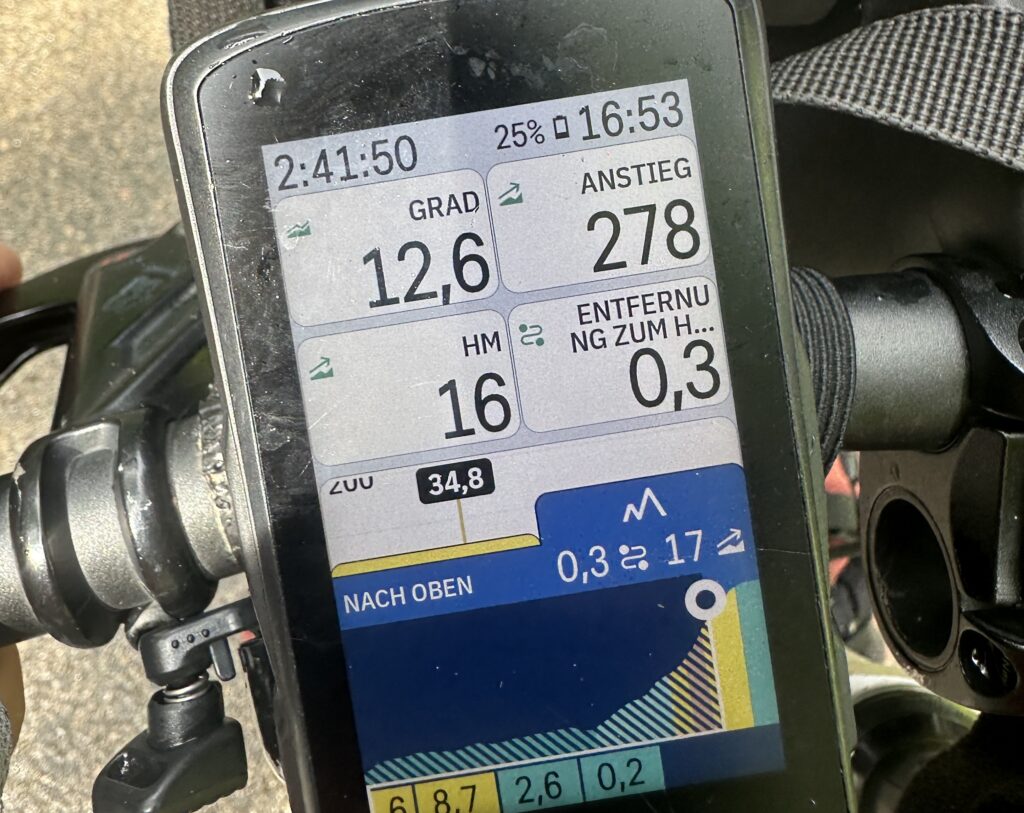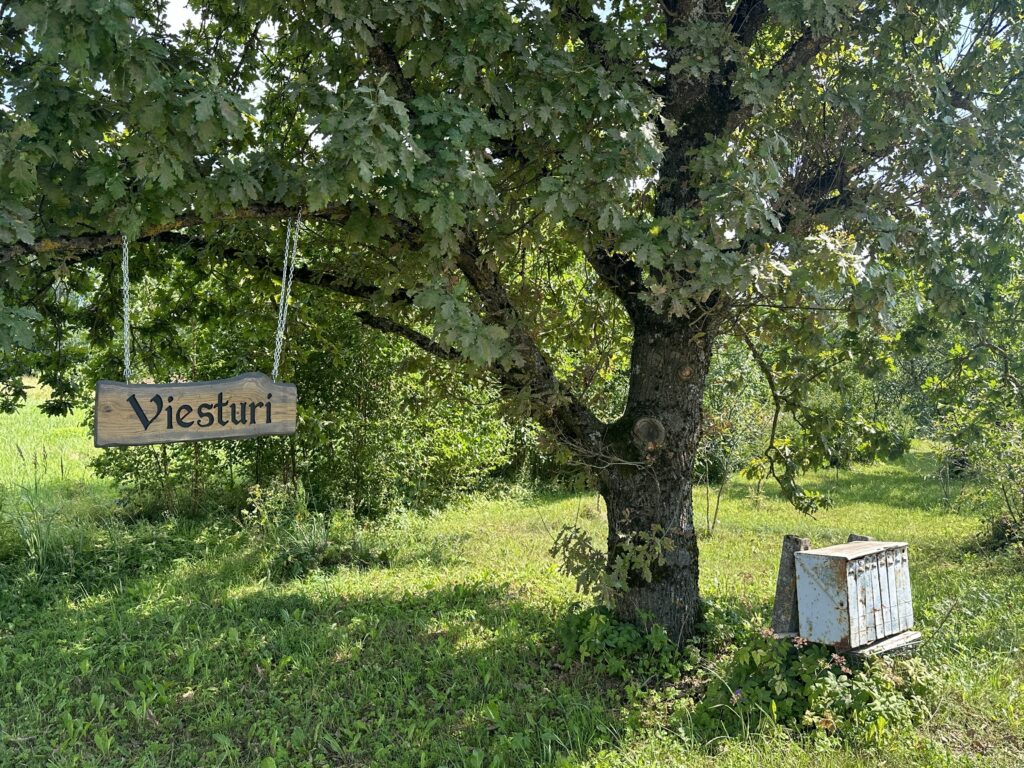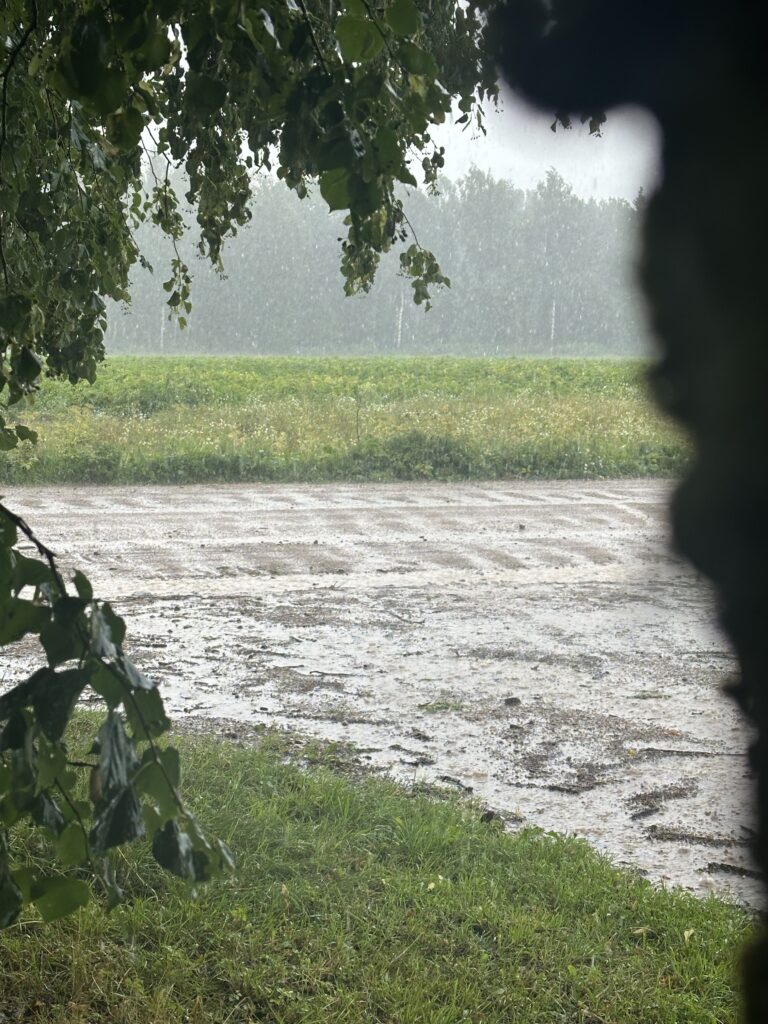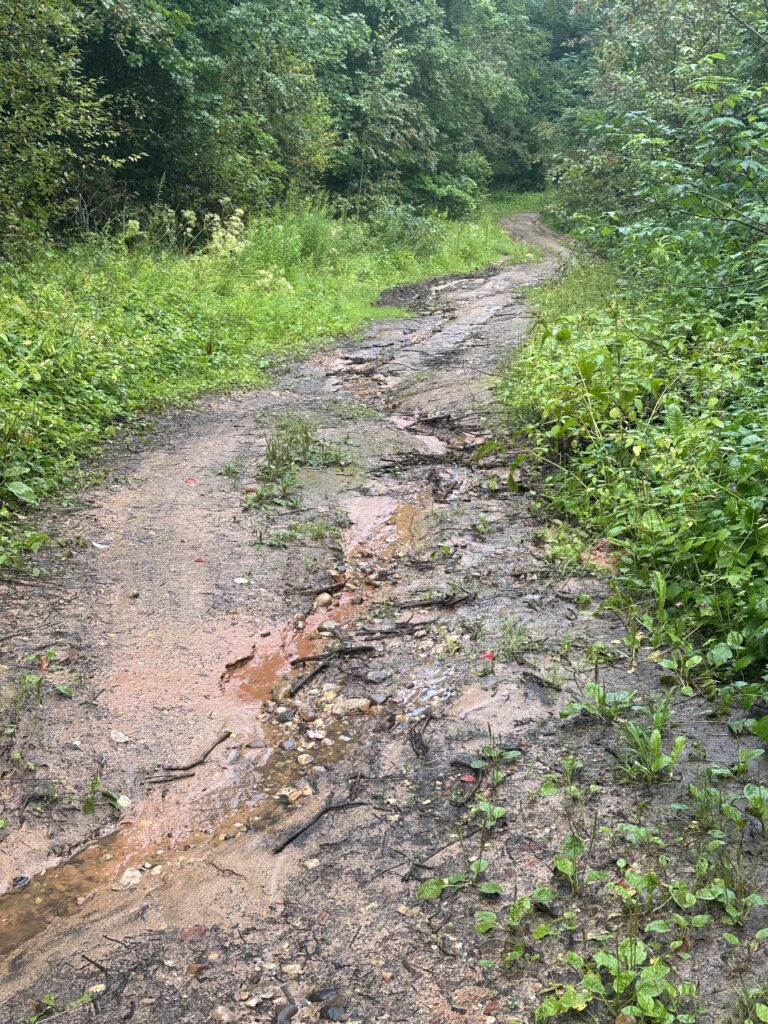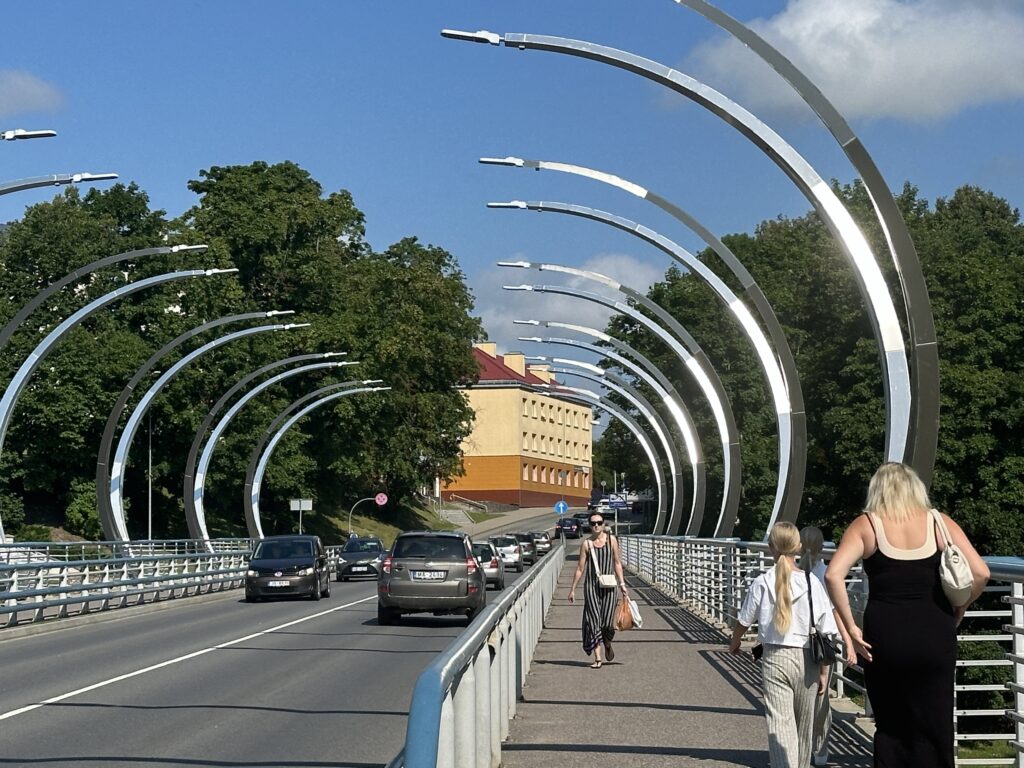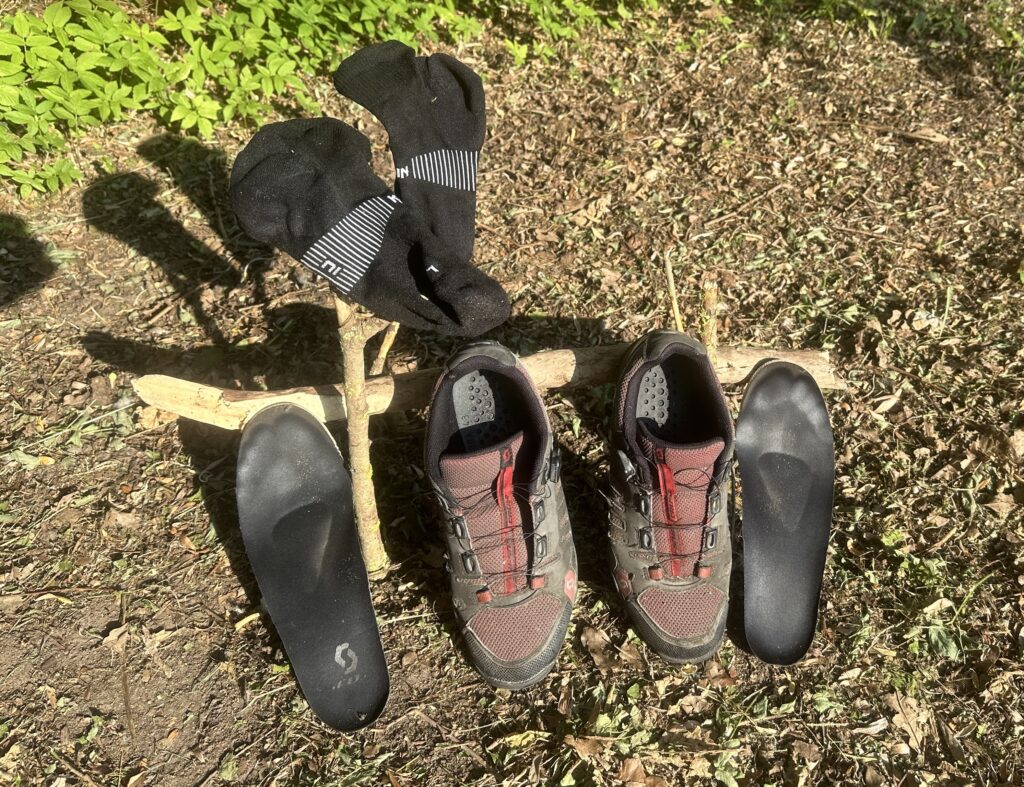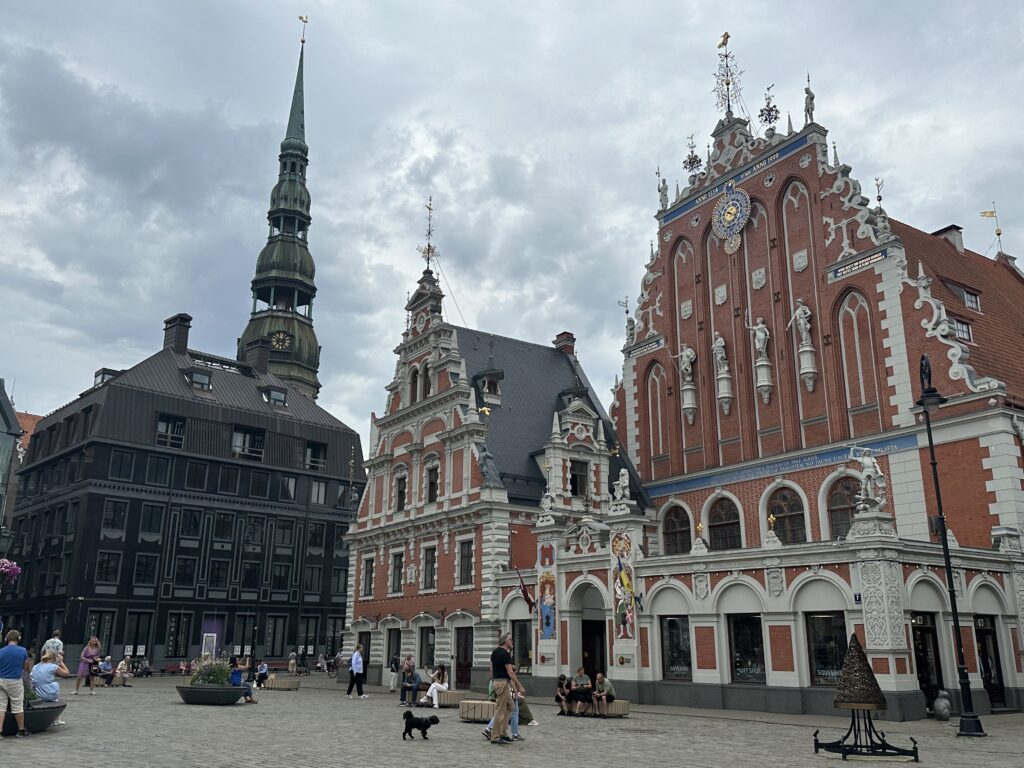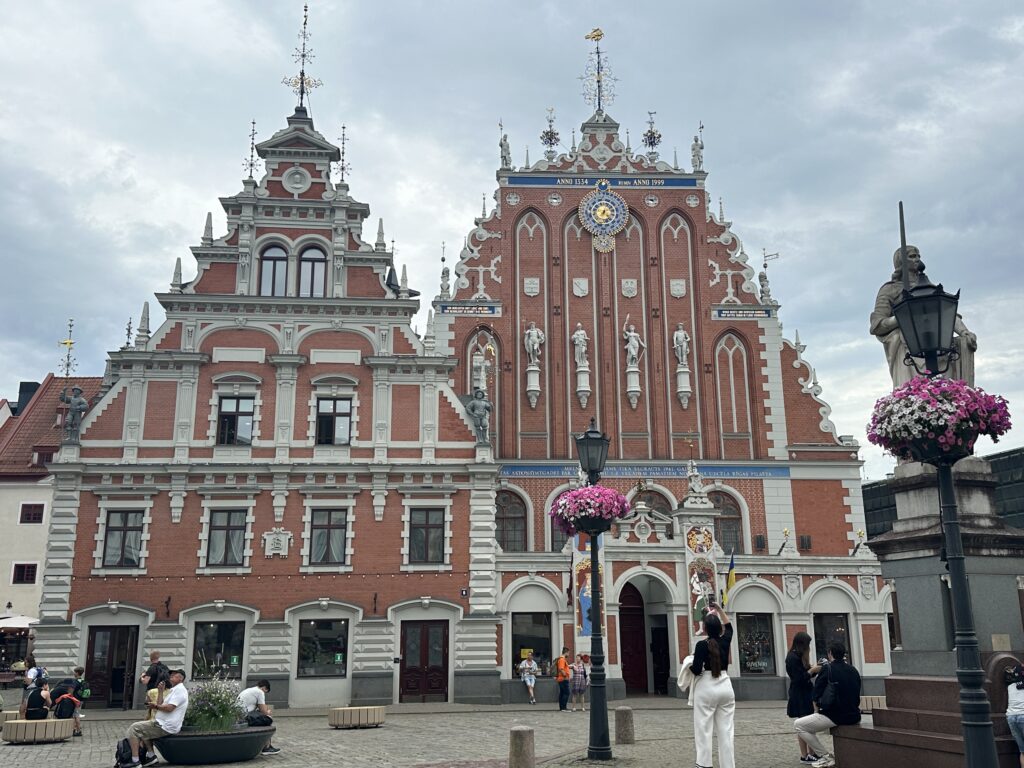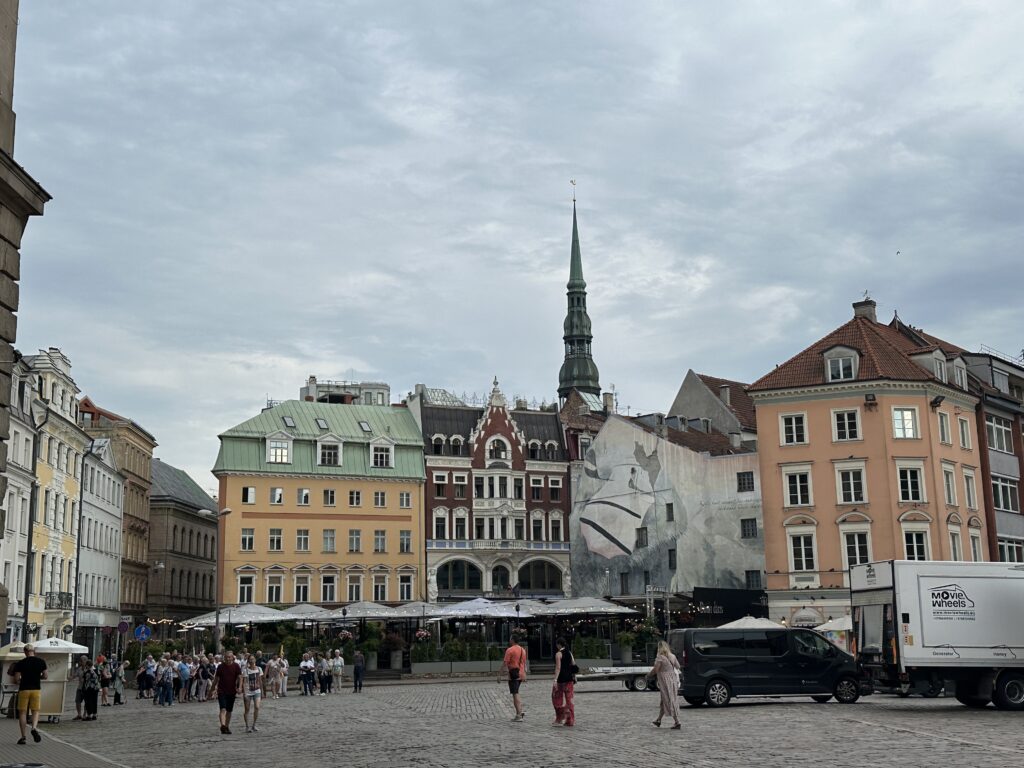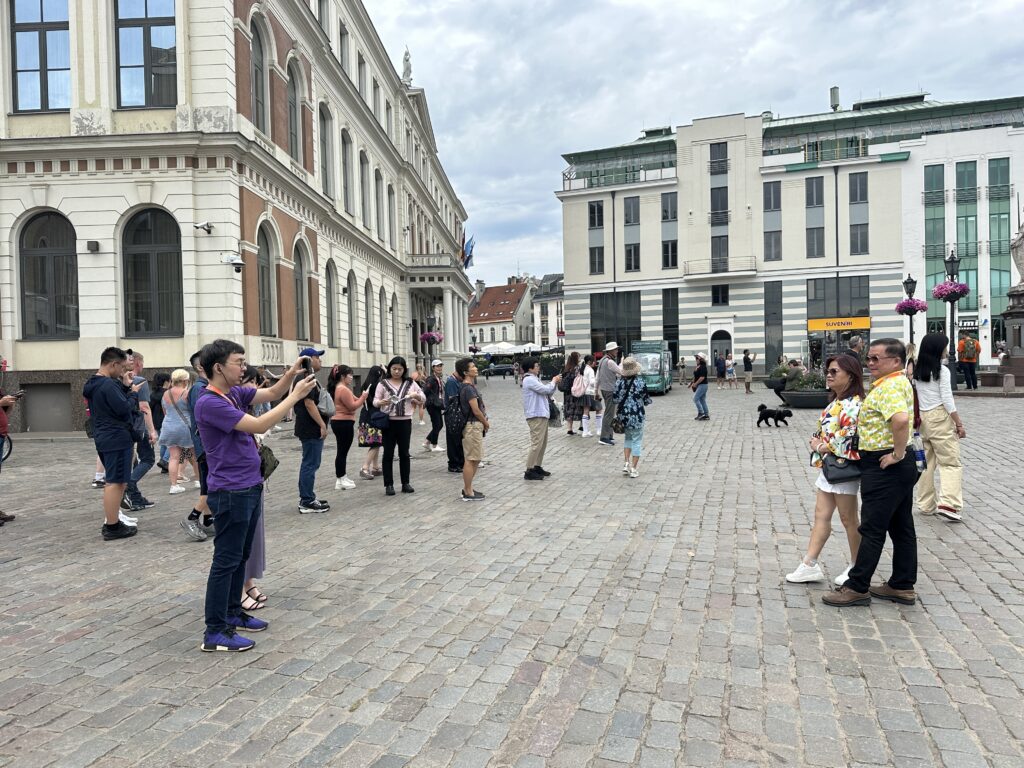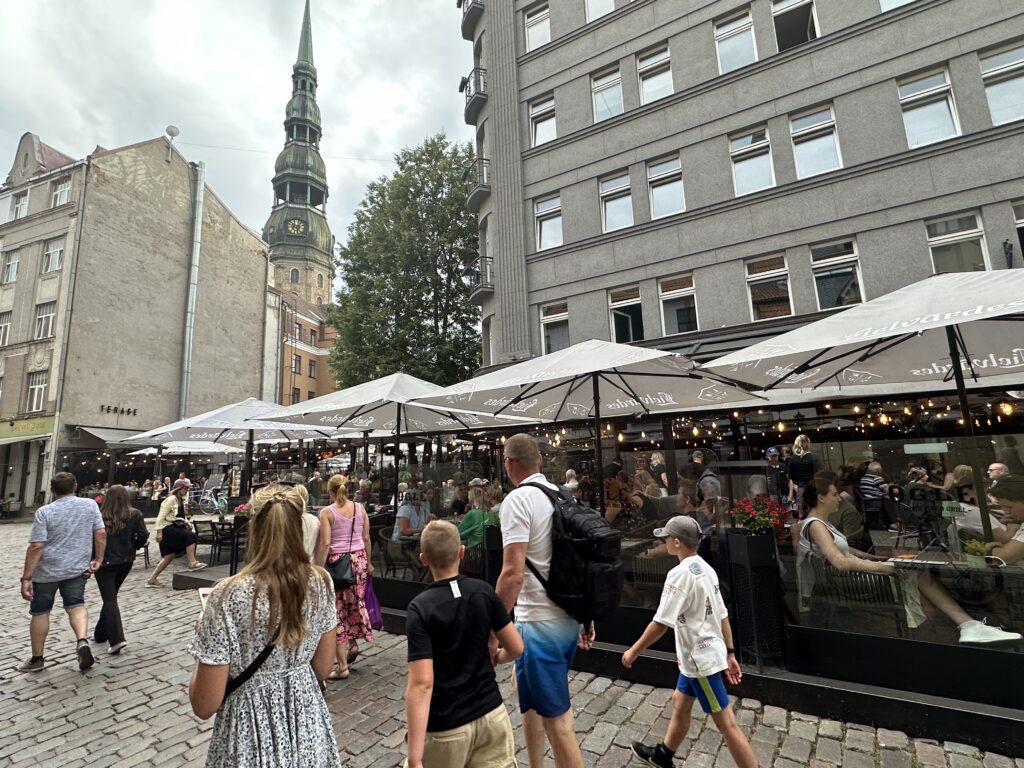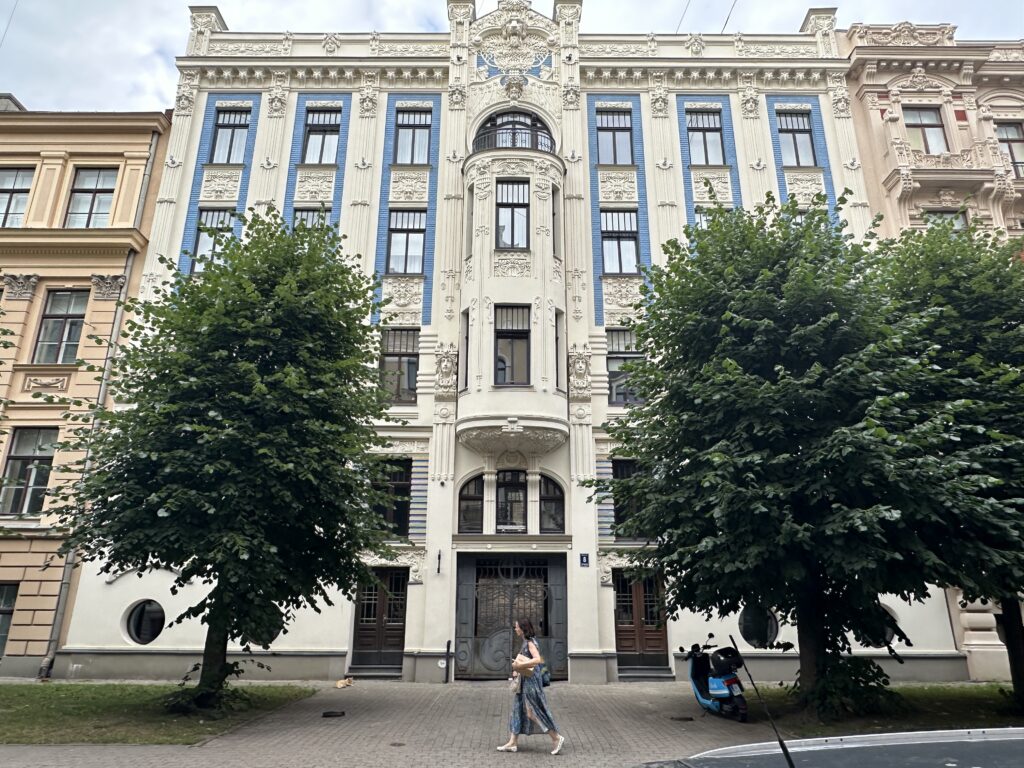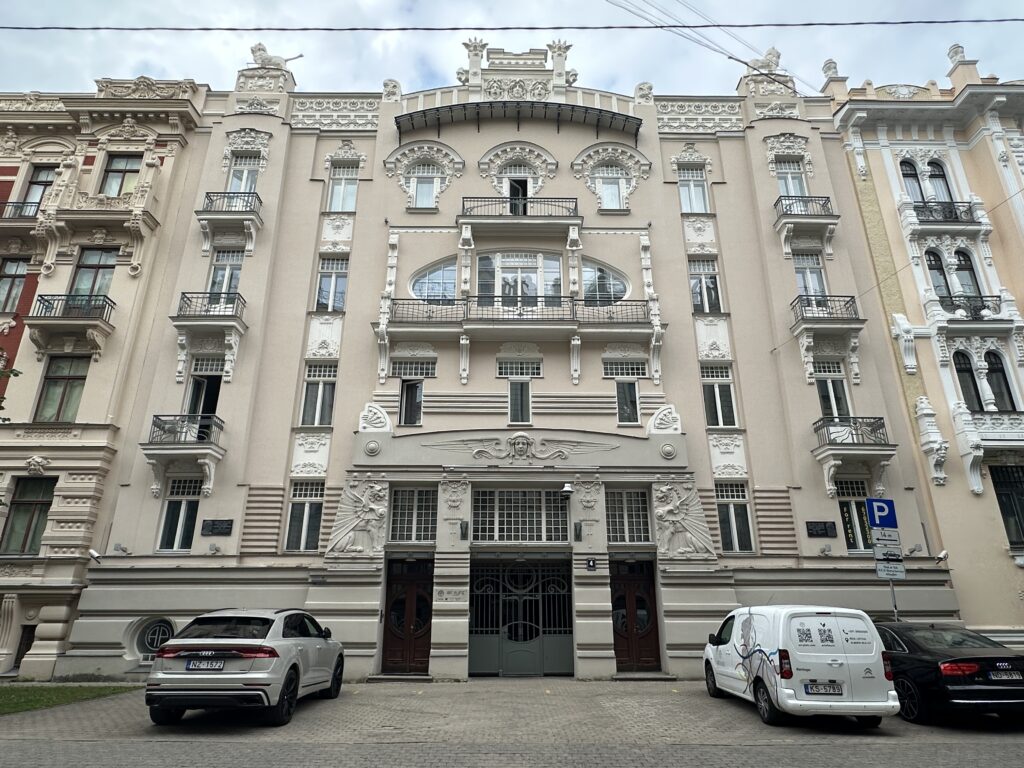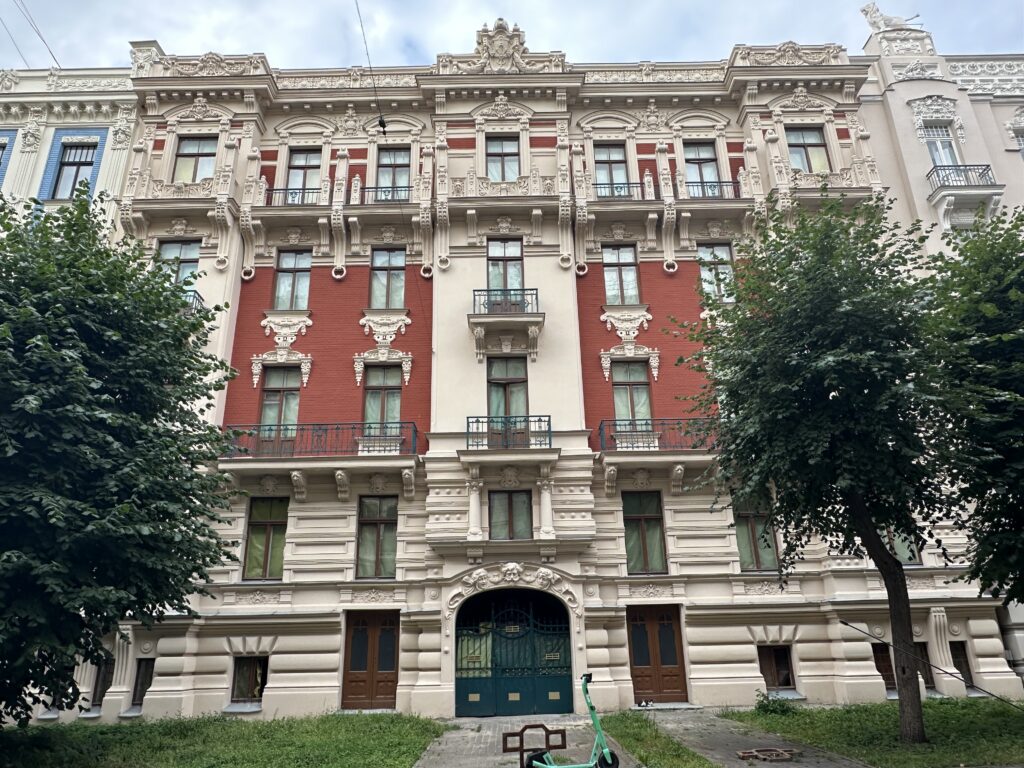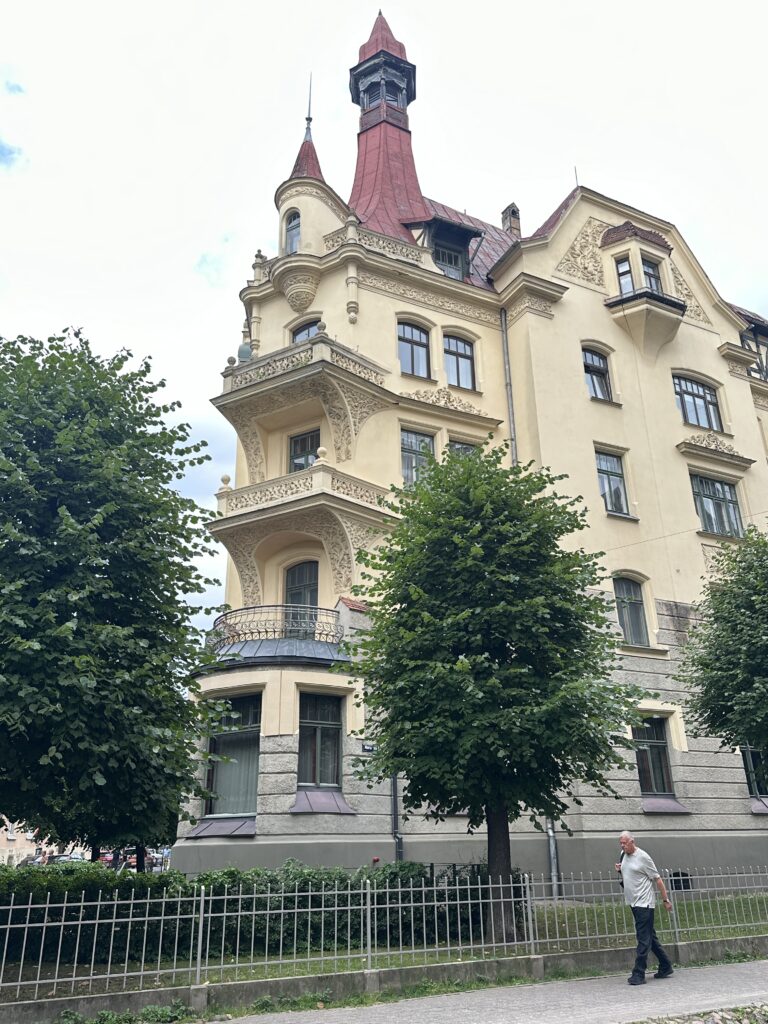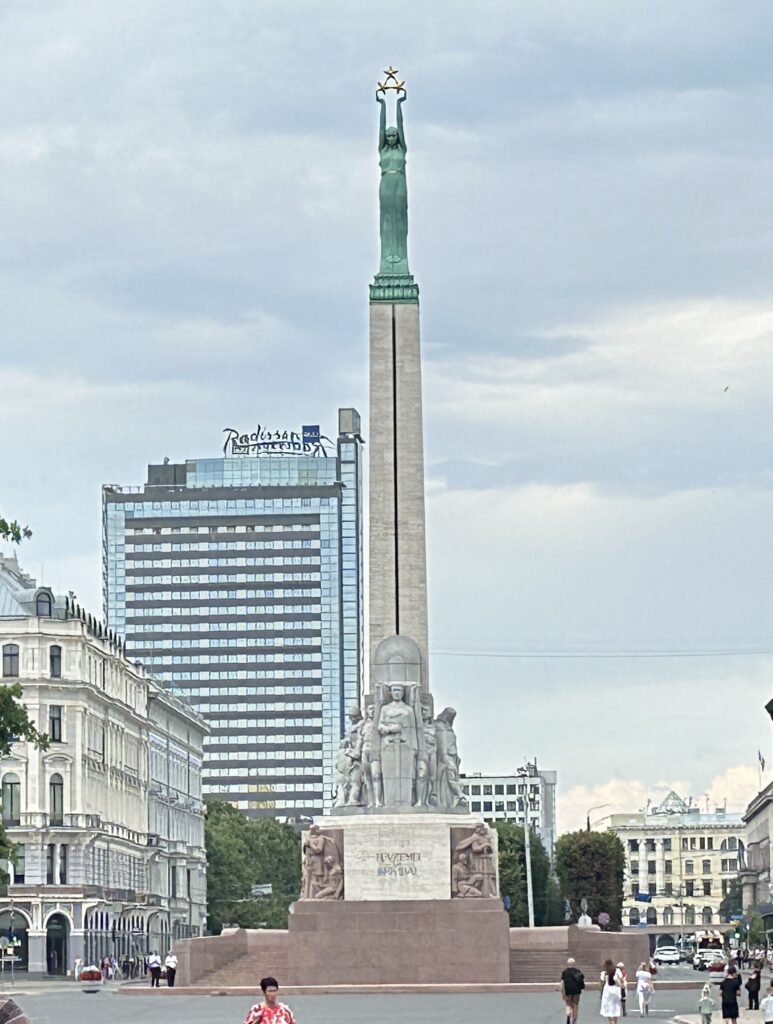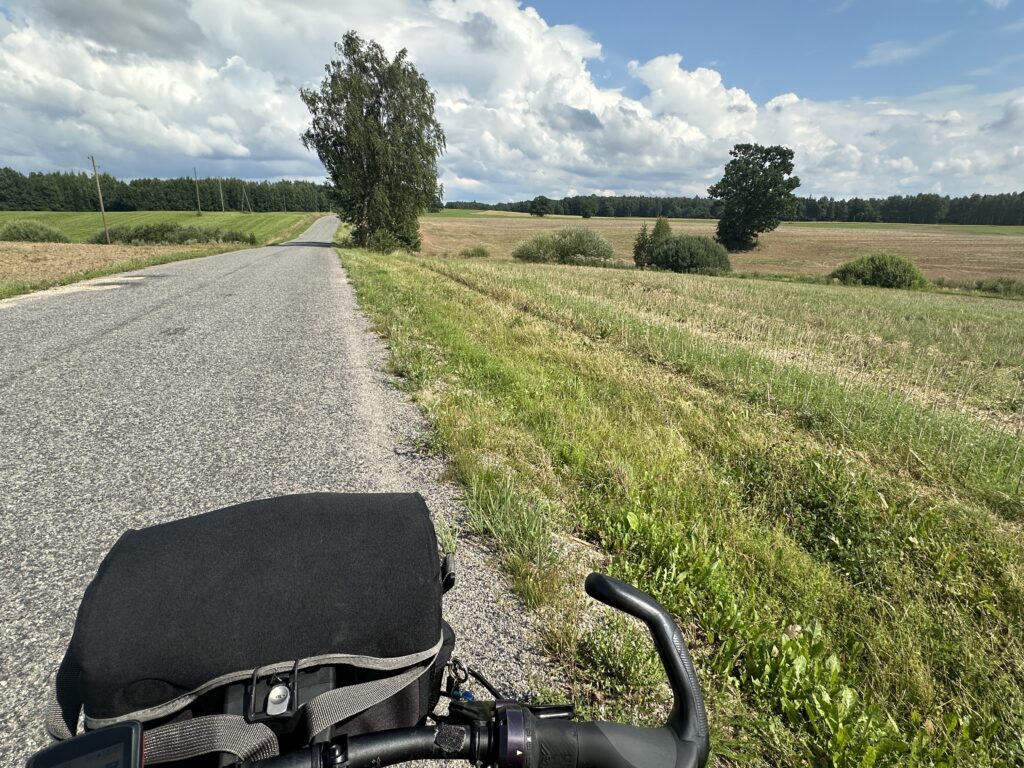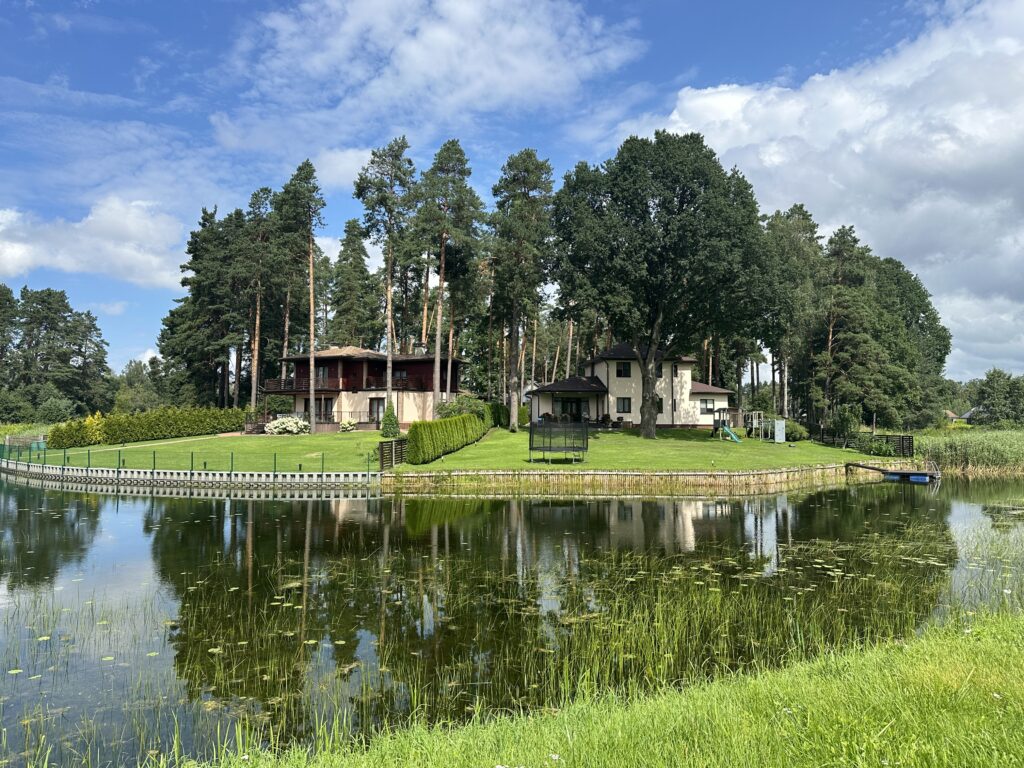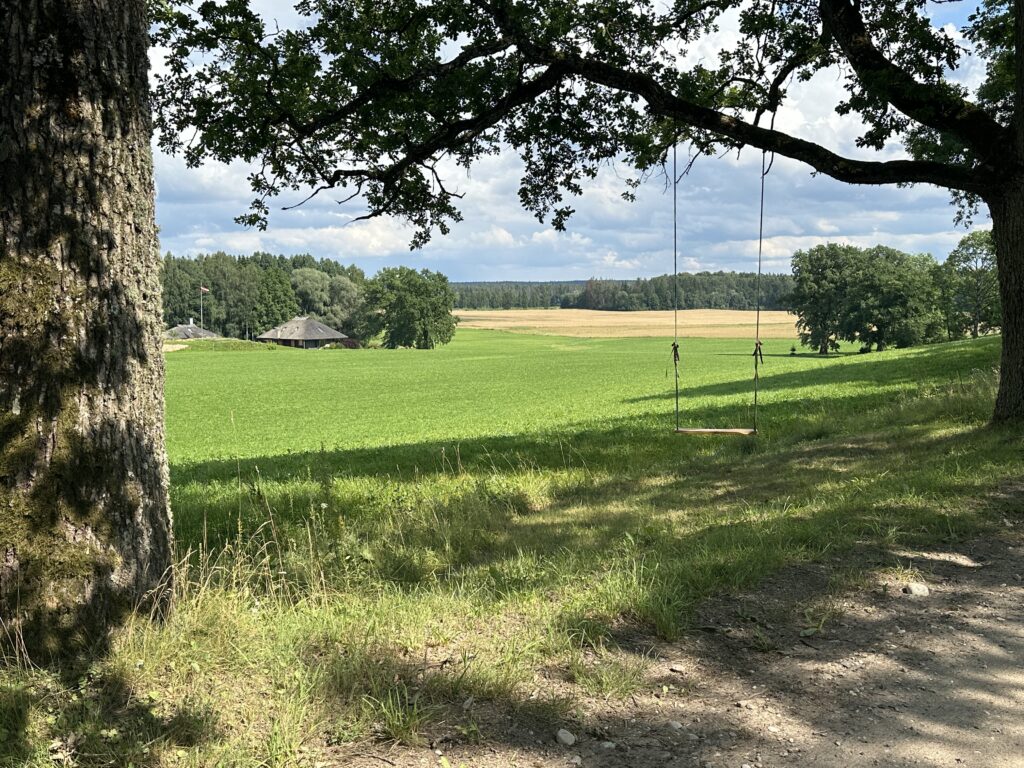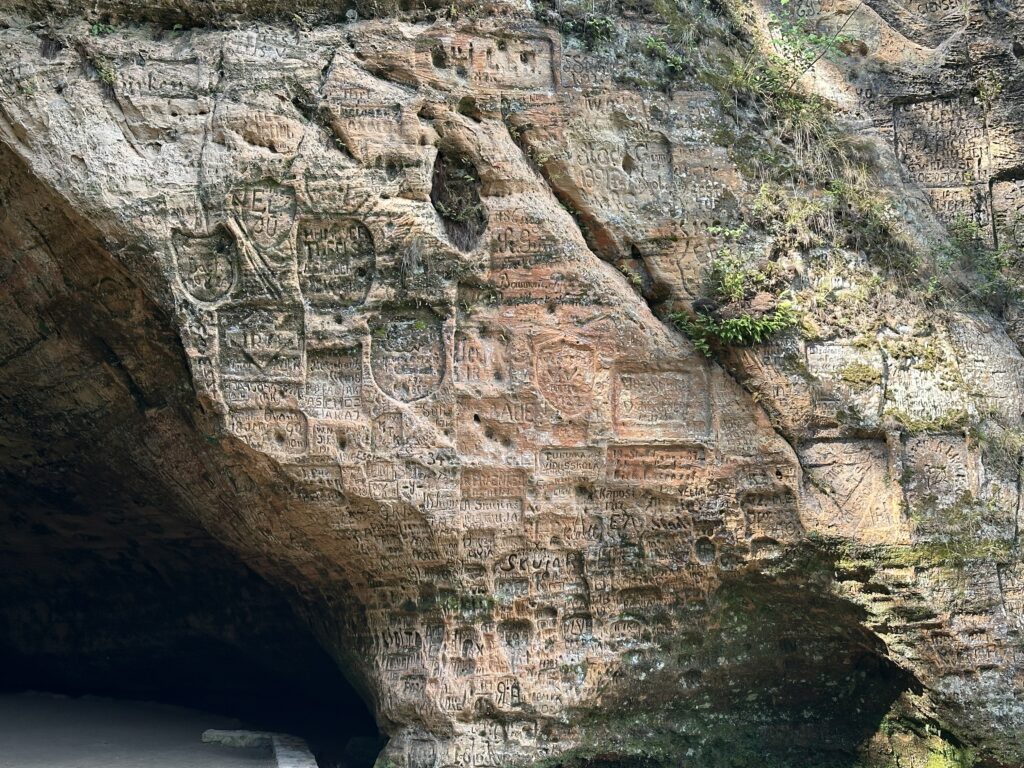July 23-26, 2024
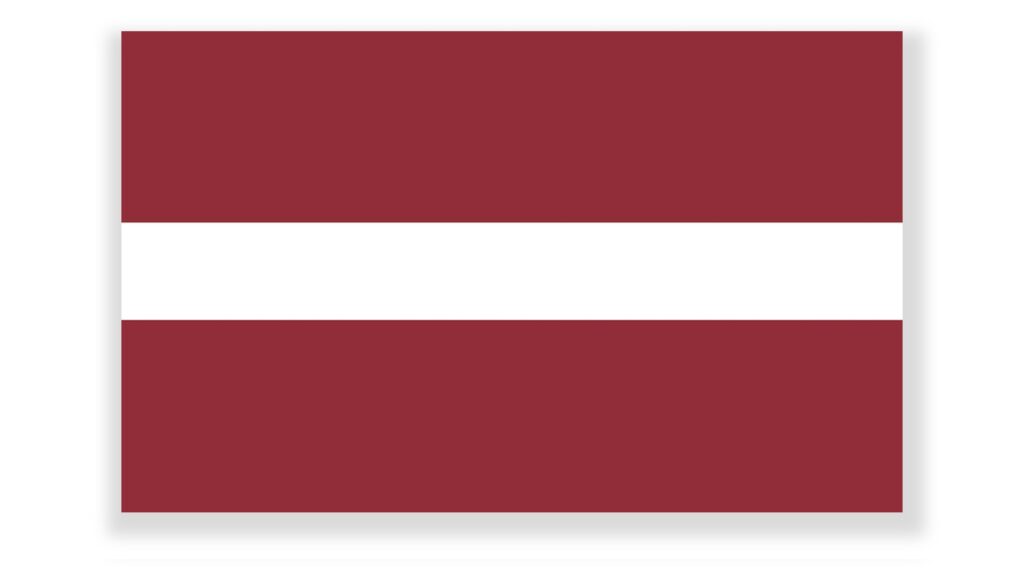
4 Traveldays
3 in the saddle
200 km

Click pics for large scale
In just three days, I manage the route from Riga in a north-easterly direction via the picturesque Sigulda, situated in the large Gauja National Nature Park, and the pretty town of Cēsis to the twin border towns of Valka on the Latvian side and Valga on the Estonian side.
After my ‘escape’ from the suffocating tourist hustle and bustle of Riga, the ride is initially relatively easy on the cycle path running parallel to the motorway, but not very attractive. But this changes abruptly when I enter the national park. Deep sandy stretches and long corrugated gravel passages as well as unexpectedly steep, albeit generally not very long, climbs demand maximum effort and sometimes require rescheduling due to the absolute impassability of the route specified by the route planner.
The approach to and exit from Sigulda in particular are an extreme challenge. I reach Sigulda, which is situated on a plateau above the River Gauja and is famous also for its winter sports World Cup events, via a climb of almost two kilometres with a gradient of up to 12 percent.
Only after a long, initially fruitless search do I find a very nice, idyllic campsite at Sigulda Lakeside Camping. I manage to pitch my tent there just in time before a violent thunderstorm breaks out with extremely heavy rain.
After another rainy night, I use the time in the morning to update my blog while drying my tent and other equipment and before finally setting off at midday in extremely hot and humid conditions.
Little did I realise what was in store for me: an hour-long thunderstorm with heavy rain, gusts of wind and a drop in temperature of a good 20 degrees forced me to stop on a now impassable gravel track to seek shelter under a large tree. The subsequent onward journey over totally washed-out field and forest paths, peppered with steep, slippery descents and climbs of up to 14% that mutate into torrential streams, becomes a particularly tough test, so that after only 40 kilometres of the half-day stage, I check in exhausted in Cēsis at the hotel of the same name, also to wash my totally soiled laundry.

At first, the third day seems to compensate me with summery temperatures and an easy ride on the only and therefore relatively busy, but very pleasant national road, as well as light wind support. But after a good 50 kilometres, another heavy thunderstorm with persistent downpours breaks out so suddenly that I don’t have time to put on my rain gear. Fortunately, the temperatures don’t drop too much, so I cycle about 10 kilometres through this ‘shower bath’ until I can take refuge in a bus stop shelter. On the remaining 20 kilometres to the finish, the sunshine is back and dries my wet clothes – except for my shoes.
Shortly after crossing the border into the fourth country on my tour, Estonia, I quickly set up my tent on the outskirts of Valga before the next thunderstorm looms, but fortunately it doesn’t materialise, so I can relax, prepare my evening meal and enjoy the evening in front of my tent.
Now I haven’t reported anything about the country and its people.
Of course, I can’t skip the pearl of the Baltics, Riga. After all, I changed my original itinerary at short notice because of it, a decision I almost regret during my subsequent visit. The shock is too great when I arrive there and am swept along by the army of predominantly foreign visitors, swept along through the alleyways of the old town, from one sight to the next, repeatedly blocked by groups with a button in their ear listening to a tour guide, past the countless ‘food stalls’. Outdoor catering, which is probably also a result of the coronavirus pandemic, seems to have become the main attraction, blocking the most beautiful places and the view of Riga’s unique attractions in the beautiful old town. I think back wistfully to my memorable first visit in 2009, when the city was still comparatively uncluttered and quiet, but also marked the end of my Baltic Sea cycling tour at the time, as my bike was stolen here.
I decide to escape the old town and dedicate my stay, which only lasts a few hours anyway after arriving from Vilnius, to a few special features away from the crowds, the magnificent Art Nouveau façades in Alberta Iela. I also enjoy the peace and quiet in the park around Bastei Hill and devote my attention to the Freedom Column.

As I continue my journey the next morning, I realise once again that the landscape of Latvia is hardly any different from that of north-eastern Poland or Lithuania. Only the aforementioned Gauja National Nature Park with its dense forests, the narrow and winding Gauja Valley, countless small lakes and ponds as well as the sometimes quite steep sandstone mountains and sandstone grottos and caves clearly stands out. However, heavy thunderstorms and a gruelling route prevented me from exploring more intensively. Many tourists come here in hiking groups to discover these special features.
There were no human encounters worth mentioning, not least due to the circumstances described above. The language barrier, especially in rural areas, also seems to be significantly higher than in neighbouring countries. However, compared to the exceptionally considerate drivers in Poland and Lithuania, I noticed the noticeably more aggressive driving style here. Sometimes extremely close passing and overtaking repeatedly causes brief moments of shock. However, as the driving is never really aggressive and the otherwise rather threatening lorries always overtake at a distance, you get used to it.
